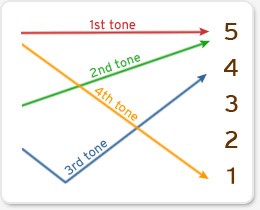Cantonese vs. Mandarin: Key Differences, Learning Advantages and Challenges
You may often hear people refer singularly to “the Chinese language.” However, this doesn’t capture the full linguistic landscape of China and surrounding regions. Chinese, in fact, is a group of related languages spoken by over a billion people.
The two most well-known are Cantonese and Mandarin. Mandarin is the official language of mainland China and Taiwan, and it is widely spoken in Singapore. Cantonese is mainly spoken in Hong Kong, Macau, and the province of Guangdong. Both languages share the same writing system but differ significantly in pronunciation, grammar, and vocabulary.
Understanding the differences between Cantonese and Mandarin is not only crucial for helping learners to select which language to learn but also for fostering cultural appreciation and respect.
Background
Origins and historical development of Cantonese and Mandarin
Cantonese, also known as Yue (粤语, Yuèyǔ; 广东话, Guǎngdōng huà), originated in the Guangdong region of southern China. It evolved from the ancient Chinese spoken in the area over two thousand years ago. The language developed distinct characteristics due to its geographic isolation from northern China. Over time, Cantonese absorbed elements from neighboring languages and dialects, further shaping its unique phonetic and tonal system. By the era of the Tang and Song dynasties, Cantonese had become the dominant language in southern China, especially in trade and cultural exchanges. Its rich oral tradition and use in opera and cinema have cemented its cultural significance, particularly in Hong Kong and Macau.
Mandarin, also known as Putonghua (普通话, Pǔtōnghuà), originated in northern China. It developed from the northern dialects spoken during the Yuan and Ming dynasties. The language was influenced by the political and cultural center of China shifting to the north. During the Qing dynasty, the Beijing dialect became the basis for Mandarin due to Beijing’s status as the capital. In the 20th century, Mandarin was standardized and promoted as the official language of China to unify the diverse linguistic landscape. The government implemented policies to teach Mandarin in schools and use it in media, making it the most widely spoken Chinese language today.
Geographical Distribution
Cantonese is mainly spoken in the Guangdong Province of southern China, including cities like Guangzhou and Shenzhen. It is also the primary language in Hong Kong and Macau, where it serves as the official language alongside English and Portuguese, respectively. Additionally, significant Cantonese-speaking communities can be found in Southeast Asia, particularly in Malaysia and Vietnam, as well as in overseas Chinese communities in the United States, United Kingdom, Canada, and Australia.

Mandarin is the official language of mainland China, Taiwan, and Singapore. It is widely spoken across northern and southwestern mainland China, including major cities like Beijing, Shanghai, and Chengdu. In Taiwan, Mandarin is the primary language used in education, media, and politics. Singapore also promotes Mandarin as one of its official languages, particularly within its Chinese population. Moreover, Mandarin is increasingly spoken in Chinese diaspora communities worldwide, due to its status as the standard Chinese language.
Comparison of Cantonese and Mandarin
Phonetics and Tones Comparison
Cantonese and Mandarin both use tones to distinguish word meanings, but they differ in the number and complexity of these tones. Cantonese has six to nine tones, depending on the dialect, with the six primary tones being high level, high rising, mid level, low falling, low rising, and low level. These tones create subtle distinctions in meaning, making Cantonese a highly tonal language.
In contrast, Mandarin has four main tones plus a neutral tone. The tones are high level, rising, falling-rising, and falling. While Mandarin has fewer tones than Cantonese, they are still crucial for proper pronunciation and indicating meaning.


(Mandarin: click HERE to explore more about Mandarin’s tones)
Cantonese has a more complex system of initial and final consonants, including sounds not found in Mandarin, such as the initials “ng” and “gw.” Additionally, Cantonese retains more consonant endings, like “p,” “t,” and “k,” which have been lost in Mandarin.
On the other hand, Mandarin has a simpler phonetic structure with fewer initial consonants and uses retroflex consonants (zh, ch, sh, r) that are absent in Cantonese. Mandarin syllables often end in vowels or nasal sounds (n, ng), making it less consonant-heavy than Cantonese.
Overall, these differences in tonal complexity and phonetic structures influence how each language is spoken and understood.
Related Reading: Mandarin Chinese pronunciation guide
Grammar and Sentence Structure Comparison
While Cantonese and Mandarin share basic grammatical frameworks, there are several noteworthy differences.
Cantonese often places indirect objects after direct objects, unlike Mandarin. For instance, “I give you a book” is “我俾本書你” (ngo bei bun syu nei) in Cantonese and “我给你一本书” (wǒ gěi nǐ yī běn shū) in Mandarin.
Cantonese uses the particle “過” (gwo3) after adjectives for comparisons, as in “佢高過我” (keoi gou gwo ngo) meaning “He is taller than me,” whereas Mandarin uses “比” (bǐ) before adjectives, as in “他比我高” (tā bǐ wǒ gāo). Additionally, Cantonese has a habitual aspect marker “開” (hoi1), not found in Mandarin, such as “佢每日都食開早餐” (keoi mui yat dou sik hoi zou caan), meaning “He habitually eats breakfast every day.”
Cantonese also uses modal particles extensively to convey mood and emphasis, such as “啦” (la) for urging or “喇” (laa) for indicating a change. These particles are crucial for expressing nuanced meanings and emotions, adding a layer of complexity to the language.
Sentence structure in Cantonese and Mandarin also varies in several ways.
Cantonese tends to place time expressions at the beginning of the sentence, more rigidly than Mandarin. For example, in Cantonese, one might say “今日我去睇戲” (Today I go watch a movie), whereas in Mandarin, the syntax is more flexible: “我今天去看电影” (I today go watch the movie) is also correct.
In questions, Chinese languages often use a sentence-final particle, such as “嗎” (ma) in Mandarin or “呀” (a) in Cantonese, to indicate a question. For example, “你去嗎?” in Mandarin becomes “你去唔去呀?” in Cantonese.
Related Reading: The Basic Sentence Structure in Mandarin Chinese
Vocabulary and Writing System Comparison
Cantonese and Mandarin have notable differences in vocabulary, reflecting their distinct linguistic evolutions.
Many common words differ entirely between the two languages. For example, the word for “to eat” is “食” (sik) in Cantonese and “吃” (chī) in Mandarin. Similarly, “to sleep” is “瞓” (fan) in Cantonese and “睡” (shuì) in Mandarin.
Cantonese retains many ancient Chinese words and single-character terms, whereas Mandarin often uses two-character compounds. For instance, “eye” is “眼睛” (yǎn jīng) in Mandarin and “眼” (ngaan) in Cantonese.
Additionally, Cantonese incorporates more English loanwords, especially in Hong Kong. Some compound words in Cantonese reverse the order of their Mandarin counterparts, such as “rooster” being “鸡公” (gai gung) in Cantonese and “公鸡” (gōng jī) in Mandarin. Slang and colloquial expressions also differ greatly, with Cantonese having unique phrases and idioms that are not understood by Mandarin speakers.
Another significant difference between Cantonese and Mandarin is the use of traditional and simplified characters. Cantonese, especially in Hong Kong and Macau, primarily uses traditional characters. These characters retain more strokes and historical forms, such as “龍” for “dragon” and “愛” for “love.”
In contrast, Mandarin, especially in mainland China, uses simplified characters. These characters have fewer strokes and are more streamlined, such as “龙” for “dragon” and “爱” for “love.” Taiwan also uses traditional characters, aligning more with Cantonese in this aspect. This difference in character sets can affect reading and writing, with Cantonese speakers often needing to learn both forms to fully engage with Mandarin texts.
Related Reading: How to Write Chinese Characters (Quick Start Guide)
Cultural Aspects Comparison
Cantonese holds profound cultural significance in Hong Kong, Macau, and Guangdong. In Hong Kong and Macau, Cantonese is not just a language but a core part of the local identity. It is the primary medium of communication in daily life, media, and entertainment, such as in Cantonese opera, pop music, and films. The language’s rich slang and unique expressions reflect the city’s vibrant culture and history.
In Guangdong, Cantonese similarly plays a crucial role. It connects the region’s people and preserves a cultural heritage that dates back centuries. The language is essential in traditional customs, local festivals, and cuisine. Cantonese is also the main language of business and social interactions, highlighting its importance in the region’s socio-economic landscape.
Mandarin is the official language of mainland China and Taiwan, and it holds immense cultural and political significance. In mainland China, Mandarin is a unifying language that bridges the diverse linguistic landscape of the country. It is the language of politics, education, and national media, promoting unity and communication across different regions. Mandarin also carries historical weight, reflecting the cultural heritage of China’s dynasties and literary traditions.
In Taiwan, Mandarin serves as the official language, used in politics, education, and media. It is a crucial aspect of national identity and international diplomacy. Despite the presence of other local languages and dialects, Mandarin remains the dominant language in public life, education, and cultural expressions. Its role in preserving and promoting Chinese culture and values is central to Taiwan’s society.
Challenges in learning Cantonese and Mandarin
Challenges in Learning Cantonese
Learning Cantonese presents several challenges for foreign learners. One of the primary difficulties is mastering its complex tonal system. Cantonese has six to nine tones, depending on the dialect, and each tone can change the meaning of a word entirely. This requires learners to develop a fine-tuned ear for subtle differences in pitch and intonation.
Additionally, Cantonese has a rich array of colloquial expressions and slang that are deeply embedded in local culture. Understanding and using these correctly can be daunting for non-native speakers. The language also has a complex system of particles that convey nuances of mood, tone, and emphasis, adding another layer of difficulty.
Another challenge is the use of traditional Chinese characters, which are more complex and have more strokes than simplified characters. Reading and writing these characters can be time-consuming and require significant practice. Furthermore, resources for learning Cantonese, such as textbooks and language courses, are less widely available compared to Mandarin.
Challenges in Learning Mandarin
While Mandarin has fewer tones than Cantonese, with four main tones and a neutral tone, these tones are still crucial for proper pronunciation and implied meaning. Incorrect use of tones can lead to misunderstandings, as different tones can completely change the meaning of a word.
The language also has a complex system of homophones, where many words sound the same but have different meanings, which can be confusing.
Another significant challenge is learning Chinese characters. Mandarin uses simplified characters, which are less complex than traditional characters but still require memorization and practice.
Lastly, Mandarin’s grammar, though simpler than many languages, includes nuances such as aspect markers and sentence structures that differ from those in Western languages, requiring learners to adjust their thinking and understanding of language construction.
Benefits of learning Cantonese and Mandarin
Situations where knowing Cantonese is beneficial
Learning Cantonese offers several valuable benefits. Firstly, it allows for deeper cultural immersion in regions like Hong Kong, Macau, and the province of Guangdong. Understanding Cantonese can enhance travel experiences, allowing for more meaningful interactions with locals and a better appreciation of cultural nuances.
Additionally, Cantonese is a gateway to understanding traditional Chinese culture and history, as it retains many ancient linguistic elements and is used in Cantonese opera and other cultural phenomena. Learning Cantonese can also facilitate communication within Cantonese-speaking communities globally, fostering better relationships and networking opportunities.
Situations where knowing Mandarin is beneficial
Learning Mandarin offers extensive benefits due to its status as the most widely spoken language in the world. It significantly enhances career prospects, as China’s economic influence continues to grow globally. Proficiency in Mandarin is highly valued in international business, diplomacy, and various fields such as technology and education.
Mandarin also provides access to a rich and diverse cultural heritage. It allows learners to explore Chinese literature, history, philosophy, and art in their original language, providing a deeper understanding of one of the world’s oldest civilizations.
Furthermore, learning Mandarin opens up career opportunities, especially in international business, trade, and tourism, as these regions are major economic hubs. It also promotes greater cross-cultural understanding and opens up opportunities for meaningful exchanges with Mandarin speakers around the world.
Conclusion
From Cantonese and Mandarin’s historical development and regional usage to their distinct phonetics, grammar, and vocabulary, each language offers unique challenges and rewards. Learning either language provides numerous benefits, including career opportunities, cultural immersion, and cognitive development. Whether you are drawn to the vibrant, expressive nature of Cantonese or the widespread influence of Mandarin, both languages open doors to rich cultural experiences and deeper connections with Chinese-speaking communities worldwide.





This Post Has 0 Comments